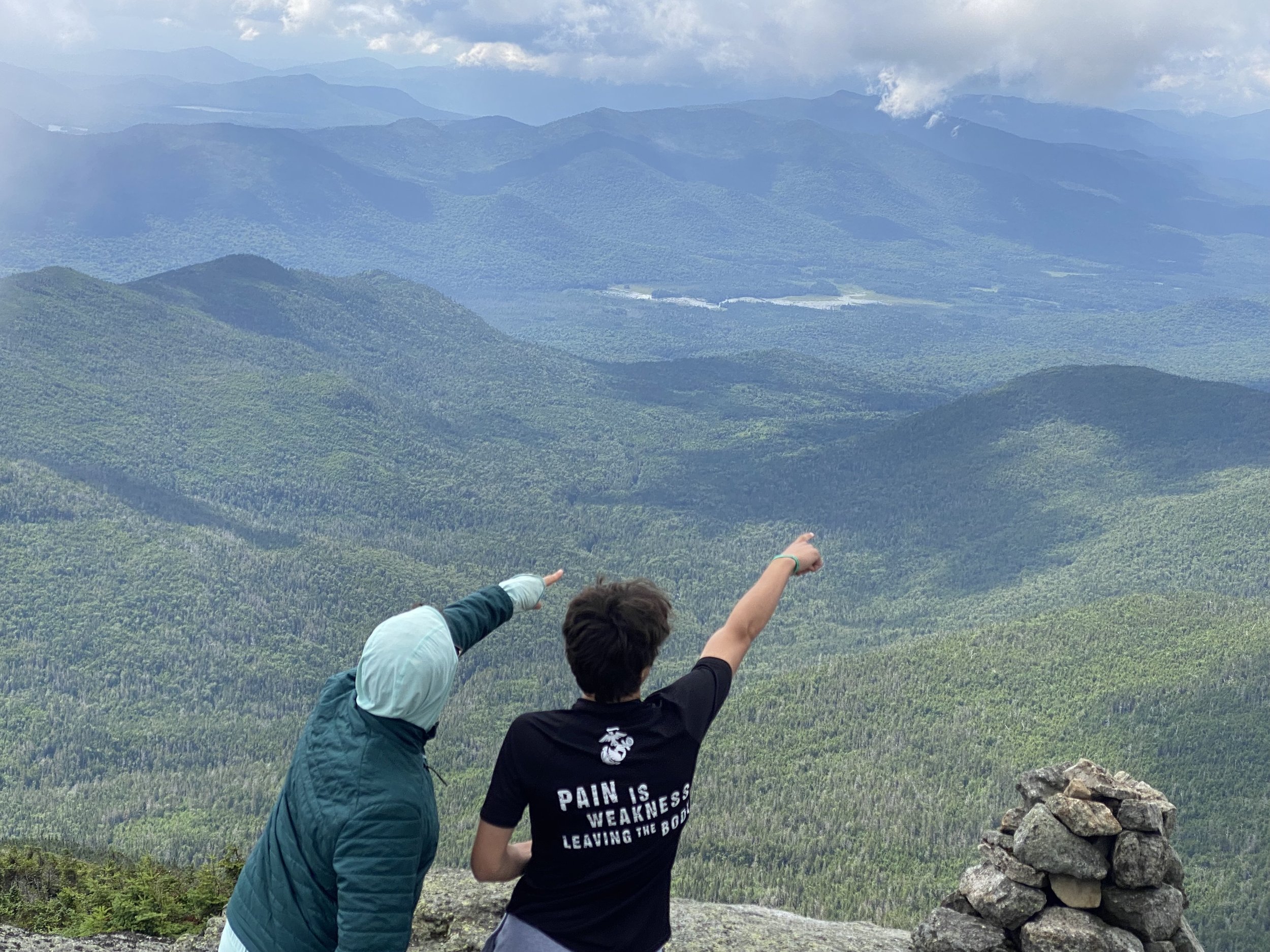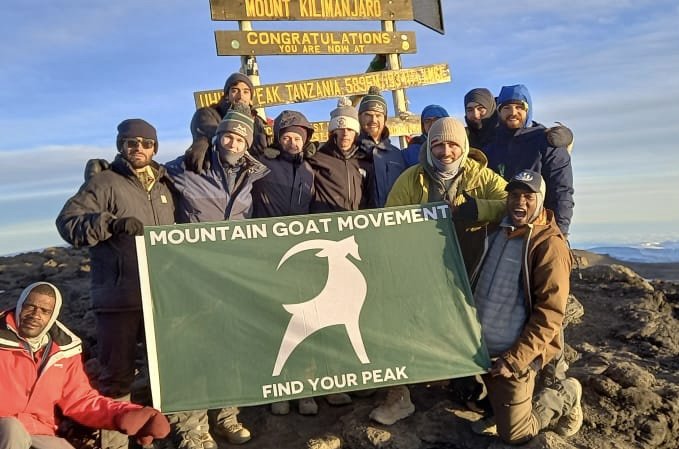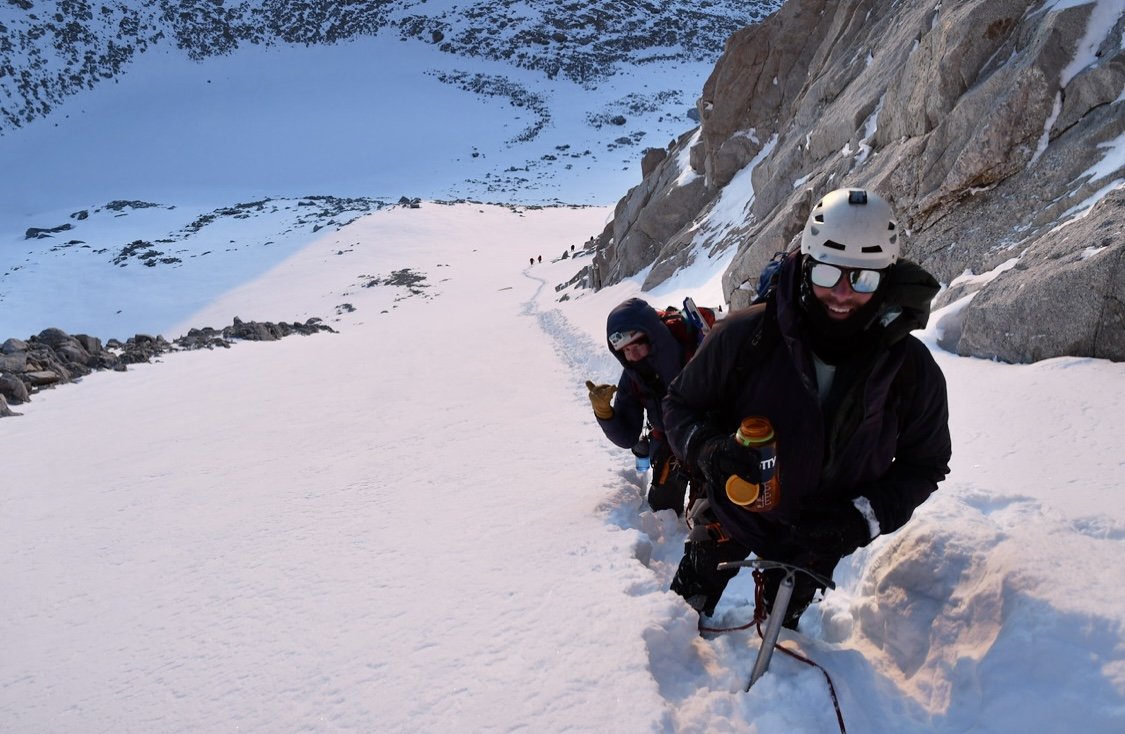An AAC member gives back to his community after receiving the Live Your Dream Grant.
PC: AAC Member Greg Morrisey
Grassroots: Unearthing the Future of Climbing
By: Sierra McGivney
There is nothing like watching the sunrise over the mountains, the whole world still sleeping. Pinks and deep oranges color the sky. On clear and quiet days, the temperature is coldest near or slightly after sunrise. Warm coffee, hot chocolate, or tea is always welcome during this time.
After years inside, these moments feel more special. All the lives lost and time stolen because of the pandemic make time spent outside invaluable to begin healing. At Mountain Goat Movement (MGM), explorers and teachers show students moments like these and the value of nature through outdoor adventures.
Morrisey speaking at the AAC’s Annual Benefit Gala in 2018.
For ten years, Greg Morrisey was a high school teacher at Saint Peter’s Preparatory in Jersey City, NJ. He spent the school year building an outdoor education program and the summer going on expeditions. In 2017 Morrisey won the American Alpine Club’s Live Your Dream Grant and completed an unsupported 1,800-mile cycling trip with one of his fellow teachers. In addition, that expedition raised $40,000 for low-income students to come on trips with Morrisey’s outdoor education program.
“That funded about 15 kids, and it was kind of crazy,” says Morrisey.
Morrisey was asked to speak at the AAC’s Annual Gala alongside Vanessa O'Brien that year. The grant changed his life.
In June of 2022, Morrisey quit teaching. He took the model he created at Saint Peter’s Preparatory and turned it into Mountain Goat Movement, a program that reaches out to schools primarily in populated cities or suburban areas in New York, New Jersey, Connecticut, and Maryland, to get students into the outdoors.
Two MGM participants in the Adirondacks, New York. PC: AAC Member Greg Morrisey
“It's easy in Colorado, Wyoming, and Upstate New York to just walk out your backyard, and go for a beautiful hike, but it's difficult in the greater New York City area so we're trying to rally a community to get in the outdoors and provide resources for anyone and everyone who wants to experience the beauty of nature,” says Morrisey.
After teaching during COVID-19, Morrisey realized how fractured life was for young people. Students have been on an island these past couple of years and reintegrating into school and society has been a shock to their system.
Like the true literature teacher he is, Morrisey explains that outdoor adventures are much like the hero’s tale in Western Literature. A young person goes out on an epic quest, leaving their comfort zone, to battle figurative monsters and demons and comes home transformed. Morrisey gives presentations at school about the mental health benefits that can be derived from spending time in nature. He compares it to the hero's journey: Wherever you are, high school or college, you are not that much different than the characters you are reading about.
A MGM group on the summit of Kilimanjaro.
Unlike Outward Bound or NOLS where participants rarely see their guides again, MGM brings the student’s teachers on the trip. The idea behind MGM is to build connections outdoors and be able to bring that back to the classroom instead of having a one-off trip. In addition, Morrisey hopes that this can also start a conversation about mental health in the classroom and how venturing into the outdoors can benefit mental health for people of all ages. Morrisey goes on every trip to train the student’s teachers with the hope that they can lead their own trips using this model.
“I think when you're on an expedition or a multi-day experience, and you break bread with people, share tents, hike, and do everything together, it's inevitable that you're going to become close,” says Morrisey. “So taking that experience and then coming back home and building off that is the most beautiful part of all this.”
PC: AAC Member Greg Morrisey
Students who might not have ever talked or met suddenly have bonded with one another and become lifelong friends.
Last July, Morrisey took a group to Kilimanjaro. His whole group summited and watched the sunrise from the top. Everyone cried. Evidently, the softer moments in the outdoors allow for meaningful relationships to form.
“It's been a very rewarding process of working with young people in the outdoors and teaching kids how to climb, hike, ski, and get outside,” says Morrisey.
Participants don’t have to travel out of the country to have these experiences. Mountain Goat Movement offers domestic trips like climbing the Grand Teton or hiking all 46 high peaks in the Adirondacks. They do also offer an extensive amount of international trips to Kilimajaro, Costa Rica, and the Himalayas.
The name behind MGM is intentional. Mountain goats are always trying to seek higher ground to survive. And just like mountain goats, whenever MGM takes participants outside, they try to achieve something higher within themselves while also respecting and protecting the land they tread on. Movement relates to being present outside, off your phone, and also moving as a community.
PC: AAC Member Greg Morrisey
The positive effects of this type of program are evident. Morrisey has seen participants who came up through his program become ice climbers, environmental scientists, and AAC members, but most of all more confident explorers and adventurers in the outdoors and in life.
“[the AAC] has always been super supportive and one of the reasons why we're able to start the foundation was because of the Live Your Dream grant, so I feel like the AAC has just done absolute wonders for a lot of kids in New York City without them actually realizing it,” says Morrisey.
He is excited to expand and watch MGM grow. John Barnhardt, a filmmaker known for the Amazon Prime TV Show Born to Explore is joining MGM. He will be documenting their experiences on all seven continents for the next year. Morrisey is looking forward to having him join the team and help get the word out.
PC: AAC Member Greg Morrisey
Just like mountain goats, we too can learn and adapt to our environment, mentally and physically. Movement in the outdoors has immense benefits. If you want to get involved or go on a trip with MGM visit their website here.







